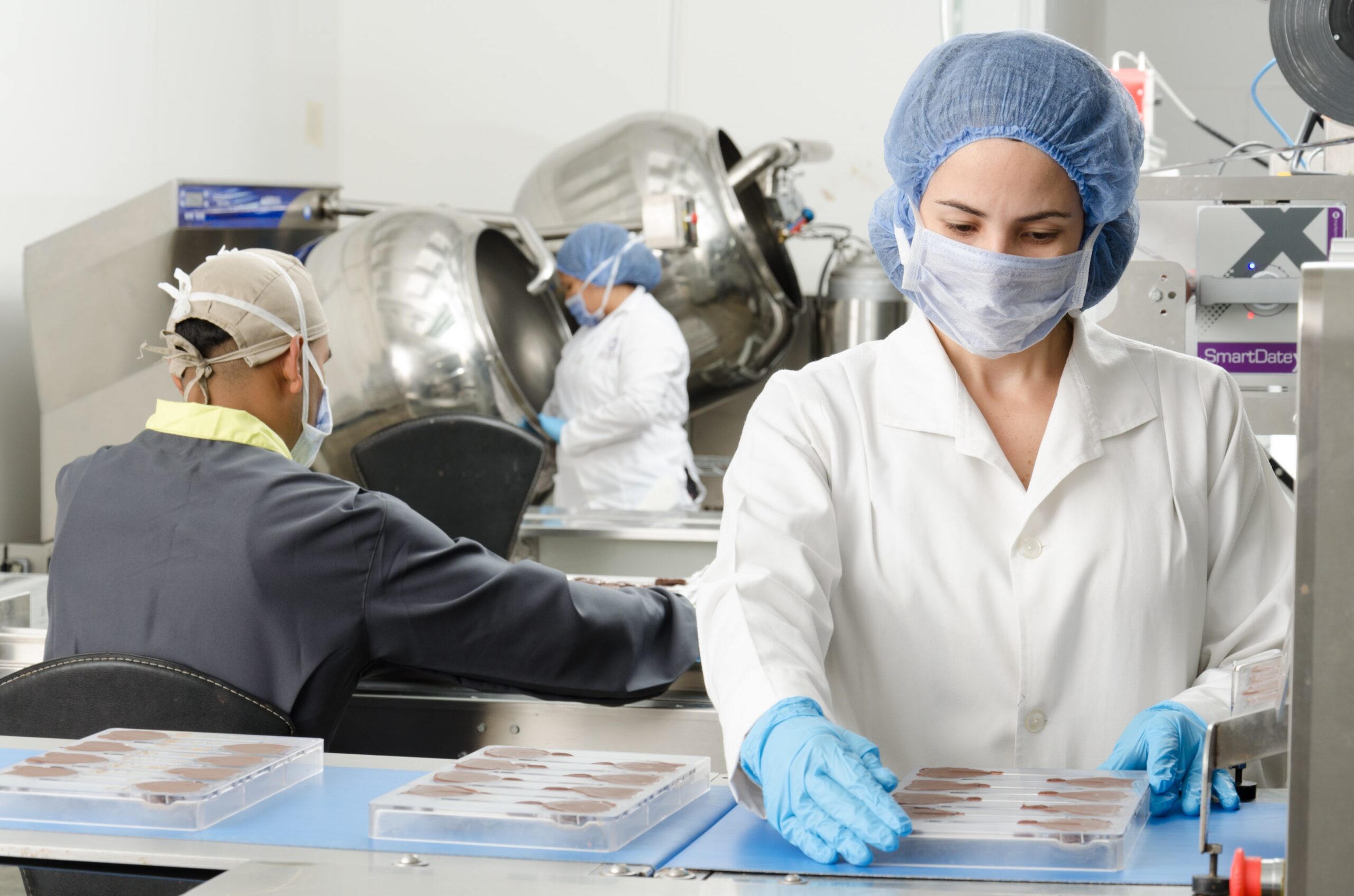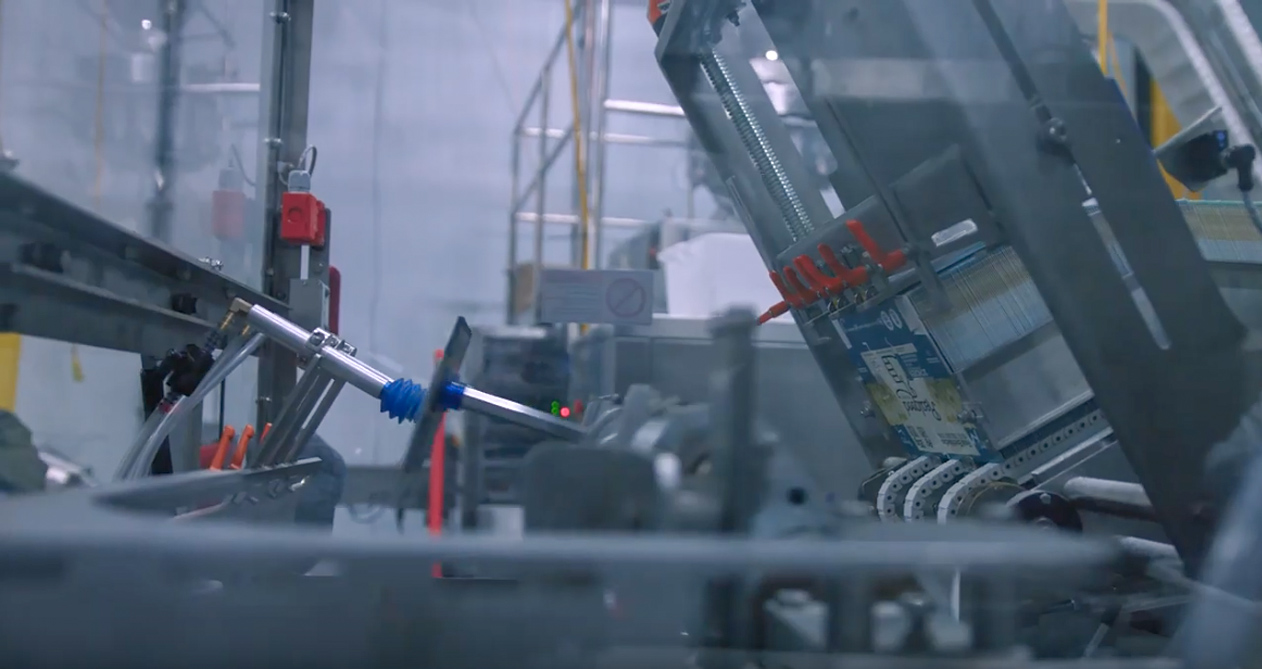Articles & Videos
Trends Transforming the Food and Beverage Industry

There’s not much to come out of the pandemic unscathed and unchanged and this is especially true for the food and beverage industry. Every aspect has been upturned and shaken up with some previous trends and markets disappearing completely, other trends accelerating at speed and brand new directions forged.
Consumers play a leading role in food and beverage manufacturing and changing consumer behaviours are the main driver in shaping trends for food manufacturing in 2021. Although in the past these trends have sometimes been short-lived, many are here to stay this time, not unlike other parts of life that have been altered irreversibly.
Stockpiling and supply chain
We all remember the grocery store scenes of empty shelves from early 2020 as we rushed to stock up on store-cupboard essentials such as pasta, flour and canned-goods. This situation has thankfully stabilized however consumers will likely stick with new habits of buying more but less frequently and always having a surplus of staples and frozen goods on-hand just in case.
Initially food manufacturers were faced with meeting demand that they just couldn’t keep up with and had to quickly get to grips with a constrained supply-chain. Finding and building relationships with new suppliers wasn’t an option at the time but now the dust has settled somewhat, many are coming to the realization that their suppliers warrant more attention if they want to improve speed to market and become more resilient to future disruptions.
Those manufacturers that were able, particularly in the value space, made sweeping changes from ‘just-in-time’ to ‘just-in-case’ approaches to holding extra inventory of items that became scarce. It won’t be possible for everyone to make large capital investments into warehousing additional inventory so we’ll probably see a combination of the two approaches and manufacturers looking to further simplify ranges by trimming marginal products.
Building resilience will be the focus for those heavily reliant on single source ingredient suppliers and some manufacturers will go ahead with the decentralization of supply-chains, either with or without the help of automation technologies, in a bid to build stronger relationships between suppliers and decision-makers and be able to respond more rapidly to demand shifts.
No immunity from the health trend
Consumers may have started off the pandemic consuming more of everything but then switched to foods that would help them to stay healthy and ward off germs. Products pushing the benefits of immune-boosting ingredients such as probiotics, citrus fruits and sunflower seeds will continue to gain traction this year and maybe further.
Food and beverage manufacturers may be able to take advantage of this trend, extending their range to products containing one of these ‘hero’ ingredients or incorporating fortifying products into existing range. Additionally, companies might be looking for opportunities to acquire or merge with smaller companies that have successfully brought innovative products to market before or during the pandemic, allowing them to quickly fill a gap in their own offering.
The coming of age of meat and dairy alternatives
Some of the products that lost out in the pandemic included meat and dairy. Consumers started testing out alternatives that were readily available from brands such as Beyond Meat and Quorn. This may not be a passing phase as consumers will continue purchasing items they didn’t give a chance previously but found they actually like, plus they can be much cheaper and have the added benefit of being better for the environment.
Meatless Farm, a plant-based alternative manufacturer, opened a new flagship plant in Calgary just this month and January saw them achieve their highest retail sales to date, buoyed by the movement towards reduced meat consumption and sustainability.
Opportunities are plenty for agile manufacturers and start-ups to take a piece of this growing market, with the plant-based meat market alone set to grow from 4.3bn to 8.3bn USD by 2025 and the dairy alternatives market to grow from 22.6bn in 2020 to 40.6bn in 2026.
Experiential food
When boredom set in, a lot of us turned to cooking as a means of escapism and experimenting with foods we’d never tried (or even heard of). Consumption of spices and condiments increased and the trends towards more experience-based home cooking will prevail.
Manufacturers could benefit from more emphasis on sensory ingredients, new things for consumers to see, smell and taste whilst also enhancing packaging to create the feeling of eating out at home and getting something authentic.
The subscription food market also continues to grow and manufacturers will be able to compete in new markets for boxes that cater to niche dietary requirements such as gluten-free, Keto and Fodmap.
Shift back to sustainability
Even pre-COVID, consumers were becoming more aware of their own impact on the planet, educating themselves on where and how their food and drink is produced and taking actions to live more sustainably. Initiatives to reduce single-use plastic packaging and food waste perhaps took a back seat in 2020 but as we near the end of the crisis, these issues will be highlighted once again, not least because the hoarding mentality and safety fears made the problems worse.
Food and beverage manufacturers can adopt a forward-thinking approach to these problems, like others who have used waste as a driver for innovation. Technology is one solution to tracing supplies from harvest to consumer, delivering data that helps minimize wastage, another is investment in sustainable packaging. A sustainable brand story is also crucial for winning over customers, especially millennials, 73% of whom say they would pay a premium for truly sustainable products.
Safety first
Shutdowns in meat processing plants at the start of the pandemic did nothing to help concerns around food safety. Consumers are more cautious about contamination and purchasing food that doesn’t come in tamper-proof packaging.
As with sustainability, transparency around safety and hygiene protocols will be needed to reassure consumers. For manufacturers, this could mean automating production and packaging processes, reshoring production for increased control or maybe new facilities or equipment to accommodate employees working at distance without sharing of equipment.
Adaptability is the order of the day
These trends will continue to some extent as will others emerge. Food manufacturers that concentrate on being able to quickly adapt to unusual demand patterns will be best placed to compete. This agility in scaling up and down is not without challenges with supply chains in other countries, affected by potential lockdowns at differing times. It’s also a difficult time to make informed business decisions around investment into R&D, new technology or acquiring a business.
Sallyport can help with a range of finance solutions for food and beverage manufacturers and processors, even those in operation for a short time, to be able to embrace these trends. Whether it’s quick access to working capital to get a large project across the line or funding to increase capacity or diversify. Our experienced team are always available to discuss the right solution for your business – reach out today!
Search
News
$1M Funding Fuels Agri-Business Growth Across Borders
Sallyport is pleased to announce a new partnership with a Canadian agriculture business, providing a $1,000,000 Accounts Receivable facility to…
Read MoreFueling EdTech Growth with $5.5M in Tailored Financing
Sallyport is excited to support a forward-thinking education technology company with a $5.5M combined Asset-Based Lending facility, including Accounts Receivable…
Read MoreArticles
Business Banking post-COVID
The business banking industry had to adapt as quickly as COVID-19 hit. For a business model that was edging slowly…
Read More5 Ways to Save Money with Full Service Factoring
The primary benefit of invoice factoring for businesses is no doubt quick and easy access to working capital. This capital…
Read MoreVideos
Popkoffs Client Testimonial
Popkoffs Client Testimonial
View NowAmerican Business Women’s Day
Sallyport Commercial Finance Celebrates American Business Women’s Day
View Now



